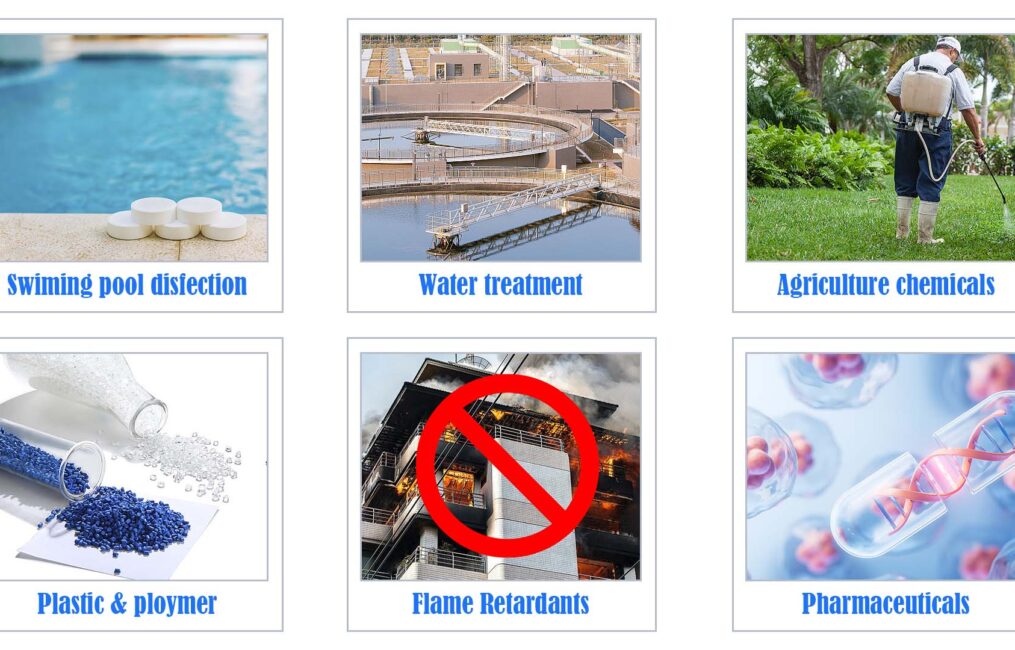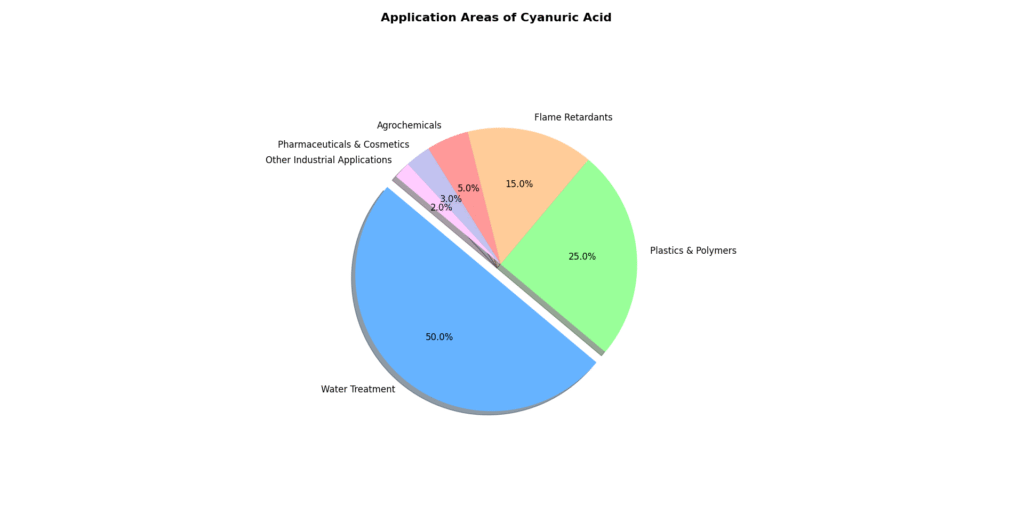Ácido cianúrico: el héroe anónimo en el tratamiento del agua, los plásticos y más allá
El ácido cianúrico (C₃H₃N₃O₃) es un compuesto orgánico versátil que desempeña un papel fundamental en numerosas industrias. Desde la estabilización del cloro en piscinas hasta la mejora de la durabilidad de los plásticos y su acción como retardante de llama, sus aplicaciones son amplias e impactantes. ¿Sabía que casi el 50% de su uso se destina al tratamiento de agua, donde garantiza agua limpia y segura para piscinas y sistemas de agua potable? Otros 25% se destinan a plásticos y polímeros, mejorando materiales utilizados en todo, desde la electrónica hasta la construcción. El ácido cianúrico también destaca en la agricultura, la industria farmacéutica e incluso la cosmética, lo que lo convierte en un auténtico multiusos. Sin embargo, su uso requiere una gestión cuidadosa para evitar problemas ambientales como el "bloqueo de cloro". Profundice en este artículo para explorar cómo el ácido cianúrico impulsa las industrias modernas y por qué es un pilar de la innovación y la sostenibilidad. Ya sea científico, profesional de la industria o simplemente curioso, ¡descubrirá por qué este compuesto es tan indispensable!

Cyanuric acid is an essential organic compound with a broad spectrum of applications across various industries. Its unique properties make it a key component in water treatment, plastics, flame retardants, agricultural chemicals, pharmaceuticals, and more. Below is a breakdown of its primary applications and their typical market shares based on industry data.

| Application Area | Share |
|---|---|
| Tratamiento de agua | 50% |
| Plastics and Polymer Materials | 25% |
| Flame Retardants | 15% |
| Agricultural Chemicals | 5% |
| Pharmaceuticals and Cosmetics | 3% |
| Other Industrial Applications | 2% |
1. Water Treatment (Approx. 50%)
- Chlorine Stabilizer: In swimming pools, spas, and other water systems, cyanuric acid acts as a stabilizer for chlorine disinfectants. It slows down the decomposition of chlorine under UV light, extending its effectiveness.
- Disinfectant Precursor: Cyanuric acid is a key raw material for synthesizing sodium dichloroisocyanurate and trichloroisocyanuric acid, which are widely used as efficient pool disinfectants to kill bacteria and algae while maintaining water cleanliness.
- Drinking and Industrial Water Treatment: Derivatives like trichloroisocyanuric acid are also used in drinking water and industrial water treatment systems for long-lasting disinfection.
2. Plastics and Polymer Materials (Approx. 25%)
- Crosslinking Agent: Cyanuric acid derivatives, such as isocyanurate esters, are used as crosslinking agents in the production of polyester resins (e.g., unsaturated polyester). They enhance the thermal resistance, chemical corrosion resistance, and mechanical strength of materials, making them ideal for coatings, adhesives, and fiberglass-reinforced plastics (FRP).
- High-Temperature Materials: Cyanuric acid-modified resins are used to manufacture electronic component encapsulants, insulation parts, and other high-performance materials.
3. Flame Retardants (Approx. 15%)
- MCA Flame Retardant: Cyanuric acid reacts with melamine to form melamine cyanurate (MCA), an eco-friendly flame retardant. MCA is widely used in nylon, polyolefins, rubber, and textiles, where it inhibits combustion by releasing inert gases.
4. Agricultural Chemicals (Approx. 5%)
- Herbicide Intermediate: Cyanuric acid serves as a raw material for synthesizing triazine herbicides (e.g., atrazine), which regulate plant growth or suppress weeds.
- Slow-Release Fertilizers: When combined with nitrogen fertilizers, it helps slow down nitrogen release, improving fertilizer efficiency and reducing environmental impact.
5. Pharmaceuticals and Cosmetics (Approx. 3%)
- Pharmaceutical Intermediate: Cyanuric acid is used to synthesize antibacterial agents, antiviral drugs (e.g., certain HIV protease inhibitors), and nitrogen-containing heterocyclic compounds.
- Cosmetic and Detergent Additives: Some derivatives are used as stabilizers or slow-release components in cosmetics and detergents.
6. Other Industrial Applications (Approx. 2%)
- Dyes and Coatings: Cyanuric acid is used as an additive to improve the weather resistance and stability of dyes and coatings.
- Chemical Synthesis: It is a precursor for intermediates like cyanuric chloride, which are used in the production of pesticides, pharmaceuticals, and polymer materials.
- Metal Treatment: In electroplating solutions, it acts as an auxiliary agent to improve coating quality.
Key Considerations
- Environmental Impact: Excessive use of cyanuric acid can lead to environmental issues, such as “chlorine lock” in pools. Proper industry guidelines must be followed.
- Compound Forms: Most applications involve derivatives (e.g., esters, salts) rather than pure cyanuric acid, so the specific compound form must be chosen based on the application.
Cyanuric acid’s versatility and wide-ranging applications make it a vital compound in both industrial and everyday contexts. As technology advances, its potential continues to expand, offering new opportunities for innovation and sustainability.



